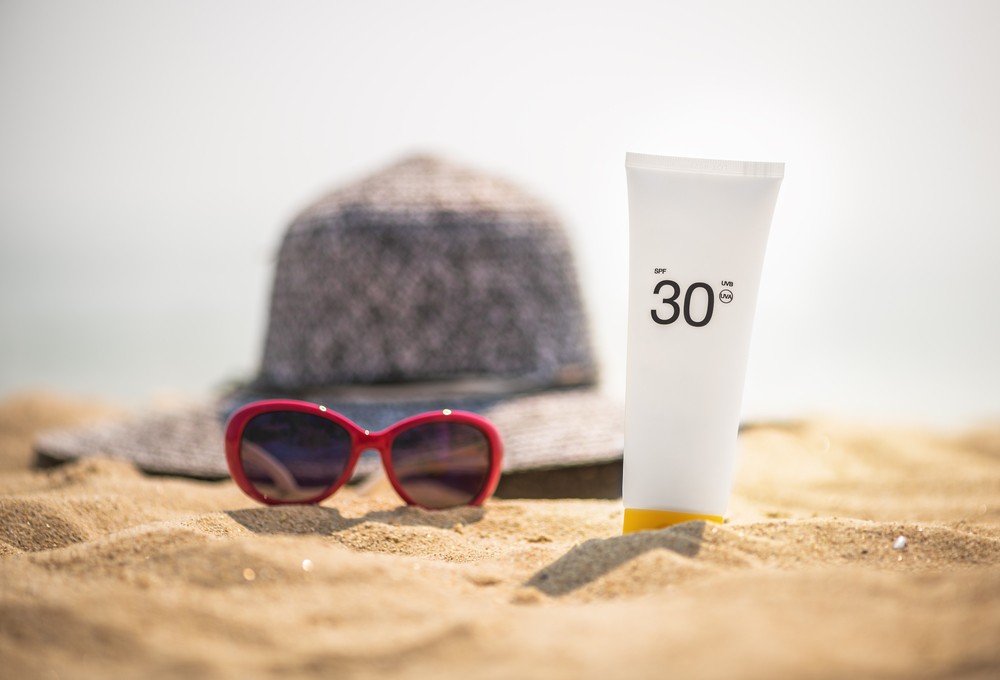Popular Reads
Top Results
Can't find what you're looking for?
View all search resultsPopular Reads
Top Results
Can't find what you're looking for?
View all search resultsSeven mistakes people make when wearing sunscreen
Here are seven common misconceptions and mistakes that people make when it comes to applying sunscreen
Change text size
Gift Premium Articles
to Anyone
Sunscreen is definitely a must when you’re outdoors and going about your day in the sun.
However, studies published in the Journal of the American Academy of Dermatology suggests that there are some common misconceptions that people have about sunscreen. This not only means that people aren’t maximizing their skin protection, but this could even pose risks of skin cancer due to ultraviolet exposure from the sun.
Here are seven common misconceptions and mistakes that people make when it comes to applying sunscreen as compiled by kompas.com:
Not paying attention to the contents of the sunscreen
The sun emits ultraviolet lights A and B (UVA and UVB), both of which are potentially dangerous to the skin. While UVB may cause damage to the surface of the skin, causing redness or sunburn, UVA is far more damaging as it has the potential to cause damages to the DNA. The effects of exposure to UVA in its extremes could include rough and wrinkled skin, and in the long-term, it may increase the risks of skin cancer.
UVB is retained by SPF, or sun protection factor, whilst UVA is retained by PA. It is necessary to apply sunscreen that contains both. Additionally, both SPF and PA are measures of sunscreen protection, so the higher the number, the greater protection is provided by that particular sunscreen.
Read also: Good news for redheads: A tanning drug for the pale-skinned
Only applying sunscreen when engaging in outdoor activities
Oftentimes, people only apply sunscreen when they are outdoors. However, did you know that being in a seemingly sheltered room does not guarantee that you are completely protected from potentially harmful exposure to sunlight? While glass windows may be able to withstand UVB emissions, UVA will still be able to pass through the windows in a room.
"UVA has a longer wavelength. It does not cause burning, but it can go deeper into the skin and cause premature aging, even skin cancer, " said dr. Fredi Setyawan, founder of the Natasha Group, an Indonesian skin clinic center.
Only applying sunscreen when it is hot outside
Generally, people assume that it isn’t necessary to apply sunscreen when the weather outside is cloudy. If the sun isn’t visible, then the rays are harmless, right? Wrong.
Clouds may reduce the intensity of visible sunlight, but it doesn’t inhibit ultraviolet rays. "Again, UVA can penetrate [the cloud], so cloudy conditions still exposes the skin to UVA," dr. Fredi explained.
Read also: How to minimize large pores
Applying sunscreen too late and/or too sparingly
Many people avoid applying a thick layer of sunscreen as it may begin to make the skin feel sticky, or cause other feelings of discomfort. Applying an insufficient amount of sunscreen limits its protection on your skin. Also, note that there are choices for sunscreens with formulas that aren’t as sticky, allowing you to protect your skin without compromising your comfort. Choose the right type for you.
Moreover, some people have the habit of only applying sunscreen after the skin has already begun to feel warm. This is a mistake, as sunscreen should be applied at least 15 minutes before any exposure to sunlight, so that the formula could offer a layer of protection.
When people do not apply sunscreen thoroughly
Have you made sure to apply sunscreen on every surface of your skin that may have a chance of getting exposed to the sun? A study published in the Journal of American Academy of Dermatology found that only 30 percent of people apply sunscreen thoroughly. Oftentimes, people miss areas such as the eyelids, behind the ears, a bald head and under the lips.
These areas become the most vulnerable surfaces for harm by ultraviolet lights. For example, the Anticancer Research Journal suggests that 80 percent of lip cancers occur due to exposure at the bottom of the lips. For this particular area, apply lipstick that contains SPF.
Read also: Five things not to do on an airplane to reduce germ exposure
Only applying sunscreen once a day
When going about our daily activities, we oftentimes forget to reapply. Remember that sunscreen does not last all day. Be sure to reapply sunscreen every 2-3 hours when under sun exposure. This is especially important when we are also exposed to water, such as when engaging in activities in a pool or at the beach.
Only relying on sunscreen for protection
Last but not least, many people seem to assume that applying sunscreen will provide your skin with enough protection from harmful rays. Wearing sunscreen may be one of the most important steps towards ensuring protection for your skin, but also be reminded to use other tools to protect your body, such as wearing a hat and sunglasses. (tha/kes)











